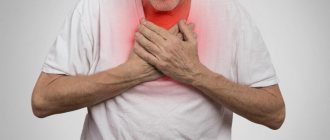Dangerous sun
The sun's rays that reach the surface of our planet consist of 40% visible light, 50% infrared radiation and 10% the most dangerous ultraviolet (UV) radiation.
In turn, the latter are divided into short UVC, medium UVB and long UVA. Among them, UVA rays have the most aggressive effect on the skin, causing redness and burns6. They penetrate into the deepest layers of the skin and can cause various changes in their cells (fibroblasts, endothelial cells, granulocytes)7. Protection against photodermatitis
- Before going out into the open sun in spring and summer, it is better not to use deodorant or perfume.
- 20 minutes before going outside, apply a cream with a high level of UV protection to exposed skin.
- Before taking a new medicine, check to see if it contains any ingredients that cause photoallergy.
- Sunbathe by first applying sunscreen to your skin. After water procedures, pat your skin with a towel so that the cream remains on the skin.
- If possible, limit exposure to open sun. Wear thick clothing that covers most of the body, and wear wide-brimmed hats.
What to do?
For a treatment regimen, you should contact an allergist or dermatologist. Before treating sun allergies, you need to find out the cause of increased photosensitivity. To do this, the doctor needs to know:
- what are your working and living conditions?
- how much time do you spend in the sun;
- what medications are you taking;
- what you eat;
- Is there enough vitamin B in the body?
Diagnostic measures mainly consist of application tests with photoallergens. A specific allergen is applied to the skin and irradiated with UV light. If a reaction occurs, then the allergen has been identified.
In more complex cases, a comprehensive diagnosis is prescribed, primarily including a blood test.
Diagnosis of the disease
In general, identifying a sun allergy is quite easy. However, at the first manifestations of the disease or even suspicion of it, it is best to consult a doctor so that he can make an accurate diagnosis.
Photodermatitis can become a provoking factor that will lead to the formation of more serious problems, such as skin cancer.
Diagnosis is made based on anamnesis. An allergist may order a series of laboratory or clinical tests to rule out other diseases and see the history of symptoms.
Insidious cosmetics
In some people, an allergic reaction occurs after using cream, ointment, deodorant, perfume, followed by prolonged exposure to the sun. Certain substances in cosmetics and perfumes react with UV rays and cause allergies. Photodermatitis can even be triggered by... sun protection cream. The danger may be:
- eosin (found in some lipsticks);
- PAVA acid (found in many sun creams);
- retinoids (found in acne and acne products);
- salicylic acid (in antiseptic ointments);
- phenol (may be present in some perfumes);
- rose, musk, sandalwood, bergamot, St. John's wort oil;
- dill juice.
Treatment
Photodermatitis can be successfully treated, but only by eliminating or reducing the effect of photosensitizers1. For this purpose, medications with photoprotective properties are prescribed. In particular, preparations containing nicotinic acid (vitamins PP, B3). It dilates blood vessels, reduces cholesterol levels, improves liver function, and reduces itching. Usually medications are taken orally, but in severe forms they are administered intramuscularly5.
Another effective active ingredient is para-aminobenzoic acid (vitamins B7, H1). On its basis, preparations are made for both internal (tablets) and external (ointments) use.
Allergy to the sun. Photo: JanMika / Depositphotos
The treatment program may also include medications based on the following active ingredients7:
- glucocorticoids;
- thiamine;
- pantothenic acid;
- pyridoxine;
- cyanocobalamin;
- riboflavin;
- resorcinol;
- sodium para-aminosalicylate;
- diphenhydramine;
- calcium chloride;
- benzylpenicillin;
- novocaine
Additionally, allergies can be treated with medications that normalize the functioning of the liver, central nervous system, metabolism, and strengthen the immune system. To get rid of unpleasant symptoms, during the treatment period you need to adhere to a dairy-vegetable diet and give up alcohol. An obligatory part of treatment for almost any photodermatitis is light-protective cream. A doctor should select it.
Important!
- The most dangerous are congenital true photodermatitis. For example, xeroderma pigmentosum on the face leads to disfigurement and the development of cancer.
- Food photodermatitis is characterized by mental damage, which can lead to dementia and depression.
- Occupational photodermatitis threatens the development of chronic skin pathologies, folliculitis, pigmentation, hyperkeratosis, neoplasms, which can degenerate into malignant ones.
- With solar urticaria, the rash may be accompanied by swelling and general disorder of the body, including impaired breathing rhythm and shock.
Treatment of sun allergies in children
A fairly large number of medications used for treatment by adults are simply not suitable for children, especially infants. You should read the instructions carefully so as not to harm the child. Complex treatment is required and a mandatory visit to the doctor is required to solve the problem.
Hormonal ointments
Up to 3 years of age, the use of hormonal ointments is not recommended, except in exceptional cases, even if the instructions indicate a lower age. There are a large number of contraindications and side effects that require careful handling.
The safest hormonal drugs for children:
- Advantan ointment - helps reduce inflammation of the skin. It cannot be used for viral skin diseases, dermatitis and a number of other problems. For children, it is prescribed by doctors only after 4 months. It is applied no more than 1 time per day for a maximum of 4 weeks. Price – 550 rubles ;
- Elokom is a hormonal ointment that can be used after six months. It has a mild effect, which allows its use. It is applied in a thin layer once a day for no more than a week. Children should receive the minimum dose of the drug sufficient to achieve an effect. Price - approximately 250 rubles .
Advantan
Elokom
Even non-hormonal ointments, which are safer for use, should be used to treat allergies in children only as prescribed by a doctor. Very often, ointments can cause a number of undesirable consequences if used in the wrong way.
The most prescribed non-hormonal drugs in pediatrics:
- Gistan - consists of plant herbs, helps to cure skin rashes that appear due to sun allergies, as well as relieve itching. It is based on an antihistamine - betulin, which does not harm the child. Should not be used if you are hypersensitive, preferably after a year. You need to spread a neat layer on the lesions once a day until the end of the prescribed treatment. Typically the period lasts from 1 week to 1 month. Price – from 170 rubles ;
- Skin-cap - in the form of a cream, allows you to cure even severe skin diseases, simultaneously providing an antibacterial and exfoliating effect. Appointed after a year. Usually after use you may feel a slight burning sensation on the skin, which is a normal reaction. Apply to the skin 2-3 times a day until symptoms are completely cured. Price - about 700 rubles ;
- La-Cri - cream helps relieve redness and itching, reduces pain. It has an anti-inflammatory effect and does not cause skin atrophy. Prescribed from the first days of life. The average cost is 200 rubles .
Gistan
Skin cap
La Cree
Preparations for internal use
Medicines for children should be prescribed only by doctors.
Antihistamines
It is best to replace antihistamine tablets with drops, suspension or syrup, since their effect is much milder and is not so harmful to the child’s body. It is best to also abandon 1st and 2nd generation drugs to avoid a large number of side effects.
- Diazolin is an antihistamine that allows you to block the production of receptors. Duration of use – 5 days. Price – from 50 rubles . Directions for use: Children under 5 years old should take 50 mg tablets 1-2 times a day, after 5 and up to 12 years old 50 mg 2 times a day;
- There is a special children's Diazolin in the form of granules, which are diluted as a suspension in half a glass of water. Dosage for children under 2 years of age – 2.5 mg, after 4 years of age – 5 mg. The entire intake should be divided into 3 doses throughout the day;
Diazolin tablets
Diazolin granules
Zodak drops
Vitamin therapy
Children under 3 years of age are rarely prescribed multivitamins, since their immunity is just being built and they receive almost all the necessary vitamins from food.
Popular multivitamins:
- Pikovit - contains vitamins A, C and group B, which are so necessary for deficiencies in sun allergies. Supplements from this brand come in different forms: for children over 1 year of age, the manufacturer offers syrup, for children over 3 years of age, chewable tablets are available, and for children over 7 years of age, coated tablets are available. Price – from 120 rubles ;
- Centrum - these vitamins can be taken for children, 1 tablet per day for a month. The tablets are produced in chewable form. Used during meals. Price - about 300 rubles ;
- Multi-Tabs - one of the advantages of this brand of children's multivitamins is the absence of chemical additives in them. The Baby complex in drops is used for children under one year old. Multivitamin supplements in chewable tablets are prescribed for children 1 to 4 years and 4 to 11 years. Price from 300 rubles .
Pikovit
class=”aligncenter” width=”600″ height=”600″[/img] Multi-tabs
Enterosorbents
To get rid of toxins, the child will need to use sorbents. However, a fairly small amount of funds can be used from a very early age.
Here are a few of them:
- Smecta - can be used from a very early age. It does an excellent job of cleansing the body, and has an orange or vanilla flavor. Before one year of age, the drug should be diluted in breast milk or formula, and after one year in baby puree. In the first case, you need to give 1 sachet per day, after that - 2 sachets. This dose is applied throughout the day. Average price – 130 rubles ;
- Polysorb acts as a detoxifying and sorbing agent with high efficiency. The children's dose is calculated based on the child's weight - up to 10 kg you can only take a teaspoon of powder per day in 30-50 ml of water, up to 20 kg - a teaspoon per 50-70 ml, after 20 kg the spoon should be heaped. Price – from 100 rubles .
Smecta
Polysorb
Folk remedies
To treat a child for a sun allergy, only external remedies should be used; it is best to completely avoid internal ones:
- Chamomile compress will help with flaking skin. To make a decoction, you should brew a spoonful of herbs in a glass of boiling water, and brew everything for about half an hour. After this, the infusion is filtered, a cotton swab is dipped in it, and the damaged areas on the child’s body are wiped 4 times a day;
- Baking soda solution - can be used to dry blisters. A teaspoon of soda is dissolved in water, after which the stains and pustules that have formed on the child’s skin are wiped with the solution.
Why does sun allergy occur?
The process of forming an allergic reaction is very complex. Sun rays themselves are not an allergen and cannot directly cause allergies. However, they reflexively act on the body through the central nervous system. UV radiation activates substances that are already in the skin (porphyrins) or have reached it from the outside (various allergens). Such substances are called photosensitizers. The result of exposure to light is a protective response to them from the central nervous system7.
- Chemical photosensitizers include the drugs doxycycline and tetracycline, dyes eosin and methylene blue, petroleum products - tar, tar, tar.
- Natural - products of the activity of various bacteria, fungi, plant sap and pollen: carotenoids, furocoumarin, lactoflavin, chlorophylls, porphyrins. This also includes food allergens3.
Perfume can cause an allergic reaction to the sun. Photo: freepik.com
Healthy foods
To prevent the occurrence of unwanted allergic reactions, you need to adjust your diet:
- eat a large amount of foods containing vitamins C, B and E. It is especially useful to eat fresh berries and fruits - blueberries, pomegranates, currants;
- drink a lot of clean water. Thanks to this, it will be possible to cleanse the body of toxic substances. At the same time, it is recommended to completely exclude carbonated drinks, alcohol and juices.
- When on vacation, be careful about exotic dishes. If you are highly sensitive to sunlight, such experiments should be avoided.
Solar urticaria
Women are more likely to suffer from solar urticaria. Scientists believe that the sun mainly causes an allergic reaction in people with functional pathologies of the central nervous system and liver.
The first symptoms of solar urticaria
- Signs of an allergic reaction may appear within the first minutes of exposure to the open sun.
- The skin on the face, neck, hands turns red and begins to itch. In some people, this reaction may also occur on areas of the skin protected by clothing (especially if the clothing is thin).
- Itching in the mouth, tongue, and lips is possible.
- Symptoms disappear after exposure to direct sunlight stops3.
Symptoms appear very quickly, immediately after exposure to open sun. First - burning itching and a feeling of skin tension on open areas of the body, then - a rash in the form of flat blisters of a pink-red hue. Over time, the rash in the central part lightens, becomes pale pink, and the border remains red. The disease is paroxysmal in nature - an outbreak can last several hours or days1.
Signs of sun allergy may appear suddenly in the spring with the onset of the first warm days. The peak incidence in different regions of the Russian Federation occurs in April-June. By the end of summer, symptoms gradually disappear, even if there is no treatment. It is believed that the body simply gets used to the light7.
Skin rashes and itching are the main symptoms of photodermatitis. Photo: Frontiers in Medicine / ResearchGate
Symptoms of photodermatosis
I am allergic to meadow grasses. On sunny days, a few hours after a walk, an itchy rash sometimes appears on the hands. Is this a symptom of photodermatosis or hay fever?
In general, pollen is a greater irritant than the sun. A reaction to pollen can occur almost instantly. And photodermatosis is a delayed reaction: symptoms appear after some time. In addition, pollen allergies rarely cause skin problems. More often these are respiratory manifestations: nasal congestion, sneezing, lacrimation, coughing. While photodermatosis, as a rule, manifests itself as skin problems. However, an accurate diagnosis can be made only after examination by an allergist and allergy testing.
Solar eczema
Refers to a type of common eczema - a non-infectious skin disease that is characterized by itching, redness, peeling and irritation. Solar eczema is most often diagnosed in women 16-40 years old, mainly with a mobile and easily excitable nervous system. Exacerbation occurs in warm spring and summer, and in winter the pathology does not manifest itself, or its symptoms are significantly mitigated.
Large symmetrical lesions with small blisters along blurry edges appear on the skin. They burst, dry out, turning into serous crusts. Rashes appear on the face, neck, hands, and much less often on the forearms and legs. The constant itching bothers me. Scratching the itchy areas can lead to a secondary infection causing inflammation. It is noteworthy that if during an exacerbation the sun factor is eliminated (for example, by not leaving the house), there is practically no improvement.
Prevention
An important point in the treatment of solar dermatitis is to prevent the recurrence of rashes. For this purpose, patients with this diagnosis should necessarily use sunscreen with an spf factor of at least 30-40.
In addition, it is important to sufficiently moisturize the skin after sunbathing. To do this, you need to purchase a special after-sun cream. It’s good if it contains not only moisturizing, but also soothing components, for example, Panthenol. And, of course, when going to the beach, in order to avoid recurrence of the symptoms of the disease, you should not use decorative cosmetics and perfumes.
Professional photodermatitis
In dermatology, there is a separate risk factor - “skin of sailors and farmers.” It is professions related to agriculture and the sea that force people to spend a large amount of time in the open sun. This also includes representatives of transport professions - drivers, pilots.
When working in the country, you must not forget about sun protection. Photo: vizland/Depositphotos
Pathology develops most often at the age of 25-30 years7. It manifests itself in the form of redness (erythema) with a bluish tint. Further, pigment spots similar to freckles form in the pathological areas. The skin changes its relief and properties, becoming rougher, thicker, calloused, rougher.
Photodermatitis of summer residents
Summer residents, bathers, people working in the fields are susceptible to phytophotodermatitis (or meadow photodermatitis). It can be triggered by plant pollen deposited on the skin. When exposed to UV light, the body develops a protective reaction in the form of redness and rashes with itching and burning. In addition to pollen, allergies can be caused by volatile oils of citrus fruits, secretions of snails, caterpillars, and mites caught on the skin.
Solar prurigo
It is seasonal: it appears in the spring, when the sun's rays gain strength, and can last almost the entire summer, weakening towards its end. However, exacerbations are possible even on winter days if they are sunny. The disease can begin at any age, starting from 16 years7.
In the affected areas, the skin turns pale (white dermographism), thickens, loses elasticity, and plaques form on the surface. The rashes are very itchy and crusts form due to scratching.
Pruritus often appears on the face and exposed parts of the arms. The rashes resemble small nodules in shape. At first they form in small quantities, then there are more and more of them, and they merge into single spots. The skin is dry. Over time, the skin may become covered with small pigment spots. If the disease is chronic and severe, atrophic scars may form. Additional symptoms are irritability and withdrawal7. Due to itching, a person suffers from insomnia.
Folk remedies
The first symptoms of allergies can be relieved with folk remedies:
- Application of cabbage. It is necessary to lightly beat a cabbage leaf so that it begins to release juice and apply it to the affected areas of the skin.
- Compresses. Apply compresses made from sliced or grated potatoes and cucumbers. Keep it for about half an hour.
- Celandine and wormwood. Pour the young wormwood herb with alcohol and leave for three days. Use the resulting tincture to wipe the rash areas. Take baths with celandine infusion.
Food photodermatitis
These are mainly pellagra and pellagroid - complex systemic diseases that affect the gastrointestinal tract, nervous system, liver, vitamin and protein metabolism. Provoking factors are gastrointestinal diseases and alcoholism, which disrupt the absorption of proteins and vitamins. Their lack triggers a protective reaction in the body, which is expressed in increased photosensitivity. The pathology is chronic and worsens in spring/summer.
The main symptoms of food photodermatitis:
- dermatitis (rashes, itchy skin);
- diarrhea (loose stools);
- dementia (deterioration of memory and thinking abilities).
Solar cheilitis
There are several varieties of this disease with their own characteristics. In particular, eczematous cheilitis resembles classic eczema and appears on the lower lip in the form of blisters against a background of reddened and swollen skin. Over time, the bubbles merge into a single spot, open, and erosions form in their place. At the same time, the skin peels, cracks, and becomes covered with crusts after bursting blisters. The disease can be noticed by thickened, protruding lips7.
Another type is xerotic cheilitis, it develops slowly and lasts a long time. Dry, thin gray scales form along the edges of the lips. They disappear and new ones quickly appear in their place. With a long course, the formation of abrasions and wounds is possible.
Important!
Solar cheilitis is often observed in those who are exposed to UV radiation for a long time and often. This can cause malignancy.
Solar dyshydrosiform dermatitis
This type of photodermatitis, in its symptoms and course, resembles solar eczema. It develops slowly - within 10-20 days. It most often affects people with hyperhidrosis (excessive sweating). Outbreaks occur in late spring and summer when the weather gets hot. The peculiarity of this photodermatitis is the localization of the rashes: on the sides of the fingers, palms and soles. The rash appears first on the arms, then on the legs. The rashes are located symmetrically, as with solar eczema. The rash consists of deep blisters of both small and large sizes. They are covered with a stratum corneum and rarely open. As the disease progresses, the blisters coalesce into spots. Peeling of the skin is typical, and a fungal infection is possible.
People prone to photodermatitis should limit exposure to open sun. Photo/Depositphotos
Congenital true dermatitis
These are the most difficult clinical cases to diagnose and treat. Often the disease is of an autoimmune nature and is transmitted genetically7. It is often impossible to completely get rid of it.
- Xeroderma pigmentosum. It is characterized by an abnormal skin reaction to sunlight - high photosensitivity. Appears in children in the first year of life. Peak: spring or summer. The symptoms are varied, but most often there is dryness and flaking of the skin, pigment spots, papillomas, wrinkling, and deformation of the skin.
- Light pox. Appears in the second year of a child’s life on the face, hands, forearms, feet, and legs. It begins in the spring and peaks in mid-summer. Exacerbations are possible at any time of the year in bright sunshine. The rash appears as pink spots with blisters that are prone to necrosis. Over time, the spots become covered with a dark red crust. The skin tightens, which can lead to facial disfigurement.
- Porphyrin disease. Characterized by increased skin vulnerability. In spring and summer, under the influence of UV radiation, large blisters with cloudy contents appear on exposed areas of the skin. Then they can flow into erosion and scars. Most often, relapses occur under the influence of the toxic effects of alcohol and petroleum vapors, which cause liver failure. Another risk factor is a lack of B vitamins.
Relative photodermatitis
This group includes photomicrobial and photofungal (mycotic) eczema, as well as solar exudative erythema multiforme. Sunlight activates the body's defense response when bacteria and fungi come into contact with the skin. As a result, pustules (impetigo), crusts (ecthyma), and acne appear.
Scientists (in particular, M.A. Steinberg, V.P. Fedotov7) include lupus erythematosus, a disease of southern countries with a humid climate. The reasons are autoimmune disorders that manifest themselves as persistent rashes. There are acute and subacute forms.
The sun is not an allergen, but can become a catalyst for an allergic reaction. Photo: Wolfness72 / Depositphotos
Classification of photodermatitis
We told you in detail about the main types of photodermatitis. For those who want to delve deeper into this topic, here is a classification of the disease. According to the classification of the famous dermatologist M.A. Steinberg7, photodermatitis is divided into true (photoallergic) and relative. With true photodermatitis, the sun is the leading factor. In turn, this group is divided into congenital (porphyrin bullous skin disease, lightpox, xeroderma pigmentosum) and acquired. The latter include:
- solar eczema;
- pruritus;
- hives;
- cheilitis;
- dishydrosiform dermatitis;
- persistent erythema.
With relative photodermatitis, the sun acts as a catalyst. This group of diseases is divided into the following types:
- medicinal - this includes allergic reactions caused by medications, for example, some antibiotics, as well as dyes;
- professional - meadow dermatitis, toxic melasma, pathologies associated with radiation in production, agricultural work, exposure to petroleum products;
- food - pellagra, pellagroid, light dermatitis associated with quinoa;
- toxic-infectious - lupus erythematosus, solar multimorphic erythema, photomicrobial and photofungal eczema.
The classification of photodermatitis by type of allergic reaction to the sun looks like this4:
- Phototraumatic reactions. Occurs when the skin is overexposed to UV radiation. Expressed in the form of I–II degree burns on open areas of the body. People with white skin, especially albinos, are most susceptible to such reactions.
- Phototoxic reactions. They occur in cases where a person’s body contains substances that increase sensitivity to UV light (photosensitizers). For example, the cause may be porphyrins - substances that accumulate in the blood and tissues.
- Photoallergic reactions. They represent the body's immunological response to an antigen that is formed under the influence of light.
- Idiopathic reactions. These include some cases of skin photosensitivity with unclear causes or little-studied body reactions. An example is solar urticaria.
- Delayed reactions. They are launched some time after chronic exposure to sunlight. These include, for example, actinic (solar) keratosis.
Based on the nature of its course, photodermatitis is divided into two types: acute (photocontact dermatitis, sunburn, solar urticaria, allergies caused by medications) and chronic (polymorphic photodermatosis, pellagra, light pox, porphyria cutanea tarda, actinic reticuloid).
List of photosensitizers
Photosensitizers are substances of various origins that cause increased sensitivity of the skin to solar radiation. Often they are the ones who provoke negative conditions in the dermis.
Therefore, if you belong to a risk group or are planning a vacation in the midst of summer days, then you should exclude the list of the following products and medications from use:
- alcoholic drinks, especially red wine;
- tomatoes, carrots, sour apples, citrus fruits, figs, pomegranate, parsley, celery;
- freshly squeezed juices from these products;
- cosmetics containing oils of musk, bergamot, lime;
- aspirin;
- cardio medications (Cardiomagnyl, Magnicor, etc.);
- retinol cream;
- vitamins B6 and B2;
- diuretics (Furasemide, Pamid, Indap);
- antifungal agents (Griseofulvin, Lamisil, Tsidokan, etc.);
- fluoroquinolones (Ofloxocin, Ciprofloxocin, etc.);
- cream or medications containing St. John's wort;
- antibiotics of the tetracycline group (Doxal, Doxycillin, Unidox, Tetracycline, Rondomycin, etc.);
- corticosteroid hormonal drugs (Prednisolone, Hydrocortisone, Sinaflan, Dermovate, etc.);
- drugs that slow down cell division (Flutamide, Methotrexate, Azotriopine, etc.);
- means for lowering blood sugar (Diabeton, Siofor, Novonorm, etc.);
- antidepressants, antipsychotics (Bifol, Azafen, Aminosyl, Truxal, etc.);
- oral contraceptives with a high content of estrogen (Tri-regol, Ovidon, etc.).
In order to protect yourself and your loved ones, carefully study the instructions for medications and follow the recommendations of your doctor.
Sources
- Bolotnaya L.A. Photodermatoses // Dermatovenereology. Cosmetology. Sexopathology. —2009. — No. 1-2 (12). — pp. 188-197.
- Princely N. And there are spots from the sun // Asthma and allergies. - 2010. - No. 2. - P. 6-7.
- Macharadze D.Sh., Tsintsadze N.N. Solar urticaria and other photodermatoses // Medical advice. - 2011. - 5-6. — P. 30-34.
- Osipova V.V. Photodermatoses: photoallergic reactions // Asthma and allergy. - 2014. - No. 2. - P. 3-5.
- Polymorphic photodermatosis. Clinical recommendations. - M., 2015. - 15 p.
- Sidorovich O.I., Tsyvkina E.A. Photodermatoses: prevention and treatment // Medical advice. - 2022. - No. 18. - P. 132-134.
- Fedotov V.P. Photodermatoses (clinical lecture) // Dermatovenerology. Cosmetology. Sexopathology. - 2015. - No. 3-4. — pp. 143-157.
- Yarovaya N.F. Photodermatoses // Attending physician. - 2009. - No. 6. - P. 61-66.
Literature:
- Improving the treatment of patients with polymorphic photodermatosis, taking into account clinical, immunogenetic and morphological indicators: abstract of the dissertation for the scientific degree of candidate of medical sciences: specialty 14.00.11 / Inoyatov Avaz Shavkatovich; Ministry of Health of the Republic of Uzbekistan, Tashk. honey. acad. — Tashkent: 2008
- “Photodermatoses: clinical picture, treatment, prevention” Elkin V.D., Schastlivtseva L.V., Bolotova A.A., Plotnikova E.V., Mitryukovsky L.S.
- N. F. Yarovaya, Candidate of Medical Sciences, Associate Professor of the State Educational Institution of Further Professional Education RMAPO, Moscow Magazine “Attending Physician” dated 05-06/2009
- Brawan J., Andersen W., Lee J., Labadie R., Solares G. Photoaging versus intrinsic aging: a morphologic assessment of facial skin // J Cutan Pathol. 1995; 22 (2): 154–159.
- Finkel P. Sun protection factor and UVA protection labeling in Europe // Euro Cosmetics. 1999; 4:34–38.








![Selenium [converted]-04-1.jpg](https://laram-halal.ru/wp-content/uploads/selen-preobrazovannyj-04-1-jpg-330x140.jpg)

